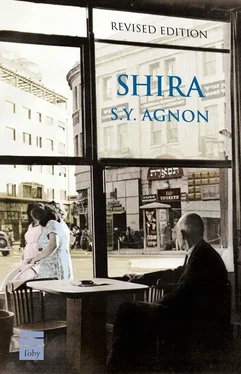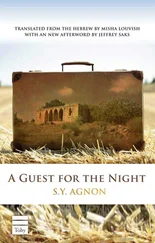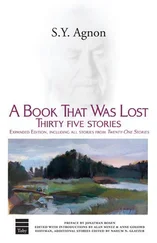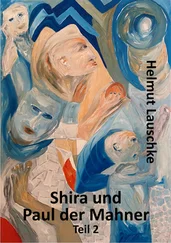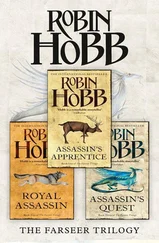Never were guests as welcome to Mrs. Herbst as they were at that moment. She knew it was Herbst’s way to be angry when someone came, because of the interruption; that, as soon as he saw the guests, he would enjoy them; that he was looking for an excuse to stop working and would welcome them for relieving him of the choice.
(Describe the various guests as well as their conversations. The young man may be one of them.)*
* [ The sentence in parentheses was added by Agnon in pencil at the end of the chapter. The guests, and the young man Herbst is expecting, are mentioned in another fragment, not included here. — Emuna Agnon Yaron ]
Afterword by Robert Alter
S hira is S. Y. Agnon’s culminating effort to articulate through the comprehensive form of the novel his vision of the role of art in human reality. It engaged him — with long interruptions, during which he devoted himself to shorter fiction — for almost a quarter of a century. On his deathbed, in 1970, he gave his daughter instructions to publish the novel with Book Four still incomplete. Posthumously, the text of Shira remains unstable. The first Hebrew edition in 1971 ends with the fragmentary ninth chapter of Book Four, which includes Herbst’s musings on the professor of medicine who injects himself with a dangerous disease in order to find a cure (a historical figure at the Hebrew University, Shaul Adler), and breaks off with the narrator’s declaration that Shira has disappeared and cannot be found. A subsequent edition in 1974 appended the brief episode Agnon had marked in manuscript as “Final Chapter,” in which Herbst joins Shira in the leper hospital; this ending was originally intended to conclude Book Three but was set aside when Agnon went on to write a fourth book. In 1978, another substantial episode, like “Final Chapter” incorporated in the present version, was published: corresponding in fictional time to chapters 8–19 of Book Three, it prepares the way for Herbst’s discovery of Shira in the leper hospital and also explores a narrative possibility not raised elsewhere — Herbst’s confession of his infidelity to his wife.
Incomplete as it is, and even with some signs of uncertainty in its digressive and repetitive patterns, Shira is a remarkable work. The psychosexual realism — most strikingly evident in Herbst’s guiltridden, violence-prone, sadomasochistic dreams and fantasies — surpasses anything else Agnon did in this vein. What may have prevented him from finishing the book was that beyond any aim of realistic representation of psyche and social milieu, Agnon wanted to imagine in concrete novelistic detail the ultimate relation of art (or “poetry,” the meaning of Shira’s name) to truth, or, in regard to genre, to pass through the dense medium of realism to allegory, and that was a consummation that eluded him.
It may be helpful to place Shira in Agnon’s chronological development as a novelist. His earliest Hebrew fiction (there had been a few Yiddish stories before) was published in the half-dozen years after his arrival in Palestine from Galicia in 1908 at the age of nineteen, and consisted entirely of short stories and novellas. Many of these were in the subtly ventriloquistic mode of a traditional Hebrew teller of tales, and it was this identity that figured in most readers’ minds as Agnon rapidly made himself a commanding figure in Hebrew prose. Characteristically, his artfully archaizing novella set in pre-modern Galicia, And the Crooked Shall Be Straight (1912), was widely perceived in these years as his emblematic achievement. In 1913 Agnon left Palestine for Germany, ostensibly for a brief stay, but the war and a variety of personal reasons held him there till 1924. It is during the first few years of his German sojourn that he arrives at artistic maturity, rigorously revising his often effusive early stories in a precise, understated, classicizing prose that would remain his hallmark. Shortly after the war, he was working on his first novel, an autobiographical fiction he called In the Bond of Life . Though he announced in a letter written in 1920 that it would soon be in print, he must have had difficulties with it because it was still in manuscript in 1924 when it was destroyed in a fire that devastated his apartment in Bad Homburg, and Agnon never attempted to reconstruct the book. His first long integrated work, The Bridal Canopy (1931; English trans., 1937), is only marginally a novel, because it reverts to the medieval and Renaissance form of the frame-story — the peregrinations of a protagonist and his companion — into which is introduced a variegated abundance of anecdotes, fables, tall tales, and the like.
Meanwhile, Agnon continued to write realistic short fiction far removed from both the eighteenth-century setting and the formal traditionalism of The Bridal Canopy , and this involvement in social and psychological realism culminated in his first proper novel, A Simple Story (1935, English trans., 1985), a book more restricted in scope than the novels that would follow but, in the rendering of the evolution of a psychosis and its ironically qualified cure, probably the most flawlessly sustained of all his novels. From this point on, though he continued to experiment with different modes of short fiction, from anecdotal and reminiscent to surrealist and symbolic, his commitment to the capaciousness of the novel form was clear. In 1939, writing with uncharacteristic rapidity, he produced A Guest for the Night (English trans., 1968), his personal confrontation, on the eve of the Second World War, with the inward dying of European Judaism. In 1945 he brought out an even more ambitiously original novel, Only Yesterday , set in the Palestine he had encountered as a very young man, in which he combines historical realism with intricate symbolism and tragic-grotesque humor (some of the most remarkable chapters, initially composed in the early thirties, follow the canine viewpoint of a Jerusalem mongrel named Balak, who proves to be the most philosophically reflective and the most engaging character in the book).
In each of the three novels Agnon published from 1935 to 1945, he had found ways to go strikingly beyond his previous work in the fashioning of new fictional forms and in the range of themes he was able to sound. It was clearly his intention to go beyond himself once again in Shira , and he apparently set to work on the new novel not long after the appearance of Only Yesterday . Between 1949 and 1952, he published chapters of Shira in a literary yearbook issued by the newspaper Ha’aretz , material corresponding to most of Book One and Book Two of the novel as we have it. The excitement roused in Hebrew literary circles was then frustrated as Agnon confined the continuation of Shira to the privacy of his drawer, pursuing other projects in print. In 1966, after he received the Nobel Prize, he allowed two more chapters to appear, and, with failing physical powers, he was working on Shira in his last years, still hoping to forge it into what it would in any case, even incomplete, prove to be — his great last testament as a writer.
Shira is at once Agnon’s fullest invocation of the nineteenthcentury European novel and a deliberate modernist demonstration of the collapse of the thematic concerns and formal strategies of the nineteenth-century novel. Adultery as an attempted escape from the flatness and the stifling routine of bourgeois society is, of course, one of the two or three great recurrent themes of the traditional novel. One could not have chosen a more thoroughly bourgeois realm in the Palestine of the 1930s than the milieu of the Hebrew University with its predominantly German-Jewish professorate, where propriety, conformism, industriousness, self-importance, and social status were the governing values. Agnon, who lived on the margins of the Hebrew University, some of his best friends being members of its faculty, knew this world well and rendered it in his last novel with a shrewd satiric eye. Shira , however, turns out to be something quite different from a latter-day Hebrew reprise of Madame Bovary and Anna Karenina in an academic setting. Herbst, unlike Flaubert’s Emma, does not “discover in adultery all the platitudes of married life” but, on the contrary, finds that a fleeting carnal encounter with an unlikely object of desire opens up vertiginous new perspectives, makes bourgeois hearth and home unlivable for him, impels him in ways he is hardly conscious of to do something radically other with his life.
Читать дальше
